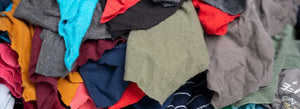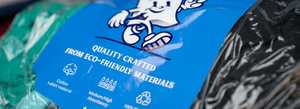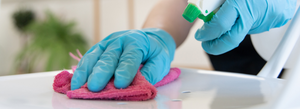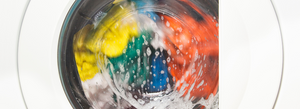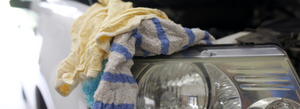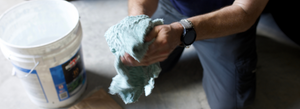Can You Get Mold Out of Cleaning Rags?
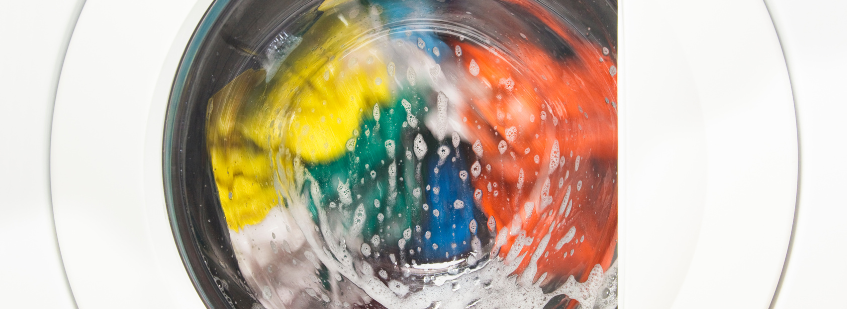
Mold is a stubborn adversary, so many cleaners — when they see or smell this substance on their wipers — will throw in the towel. That is, they literally throw the towel or rag into the trash bin and order a new box of rags.
With the right cleaning methods, most moldy rags can be restored to an extended life of service. This month’s post will cover the best practices for cleaning moldy rags.
First, though, we can’t resist saying it: Mold prevention is the best way to extend the life of your cleaning rags. Mold thrives in stagnant, moist air. So when you toss damp rags into a bin, keep the bin uncovered. Or find a bin with holes in the sides to keep air flowing. Or better yet, skip the bin and drape used rags on a drying rack until it’s time to wash them.
How to Remove Mold from Cleaning Rags
You can follow these steps to remove mold — including its distinct odor — from cleaning rags:
Step 1: Pre-Scrubbing
Mold works its way into the intertwined threads that create a fabric. Scrubbing at mold stains helps disrupt the mold’s bond to these fibers, making the following cleaning steps more effective. Use a toothbrush or scrub brush to scratch at mold stains. Apply soap or white vinegar to make gentle scrubbing more effective.
Step 2: Pre-Soaking
After scrubbing mold stains, soak rags for up to an hour in a bucket of water mixed with white vinegar. Many experts recommend a 4 to 1 water to vinegar ratio as a soaking solution: For every gallon of water, add a quart of vinegar. Note: Do not use vinegar around bleach. These two substances are toxic when mixed.
Step 3: Wash in Hot Water
A hot water wash kills more mold spores than a cold or warm wash, but defer to your rag’s washing instructions. Microfiber rags, for example, shouldn’t be washed in hot water. It’s also good to remember that a washing machine itself could be the source of mold. Use a mold-killing solution to clean the washer periodically.
Repeat these steps again for the most stubborn mold infestations.
More Ways to Kill Mold Growing on Rags
The methods below prevent mold growth or eradicate mold spores before growing into a stubborn problem:
In the Wash Cycle
Adding the following substances to the wash cycle can prevent mold growth. These methods should not be combined. Try them one at a time:
-
Add Vinegar: Adding one cup of vinegar to a wash cycle, along with normal detergents and fabric softeners, can kill mold before it takes hold and becomes visible. Don’t use vinegar with bleach or with detergents that have bleach additives.
-
Add Baking Soda: Half a cup of baking soda in a wash cycle can also eliminate odors and help prevent growth.
-
Add Bleach: Bleach is the most powerful mold and mildew killer, but it’s also rough on fabrics. Bleach will fade colored rags. Many of our customers who use only white rags like to add bleach to the washing cycle periodically. Detergents with bleach additives can be safer on fabrics. Still, we recommend testing this method on a load of old rags before using it.
During the Drying Process
In the drying cycle, avoid exposing rags to excessive heat for extended periods. Instead, try to use a shorter cycle with medium heat. The goal is to use just enough heat and time to dry cleaning rags and towels.
We understand that not every business has the time and space to dry cleaning rags in the sun, but solar heat combined with a natural outdoor breeze provides an excellent way to prevent mold. If you can make sun drying work, we highly recommend it.
Check the Washing Machine
When rags still smell moldy after a wash cycle, the problem could be inside the washer itself. Run an empty cycle to clean the drum. Add detergent, bleach, or both to the empty cycle. Use the hot water setting.
Check rubber linings inside the washer (or any other place where water can pool) for mold. If you see mold growing in these areas, scrub them with a vinegar and water solution. For areas with excessive mold growth, you may need to remove the rubber linings to soak and scrub them.
If the washer is set up in an indoor area with high humidity, run a dehumidifier in the area. Keep the washer’s door open when it’s not in use.
Fast-Drying Rags Can Prevent Mold
If you can’t seem to avoid growing mold on your cleaning rags, it may be time to try a better rag.
Among its many advantages, microfiber dries quickly and resists mold. Our blue cotton huck towels also dry quickly and resist mold growth.
Our on-site customer service staff can discuss your specific needs in more detail. Contact us today to start the conversation!
- Brad Grossman
